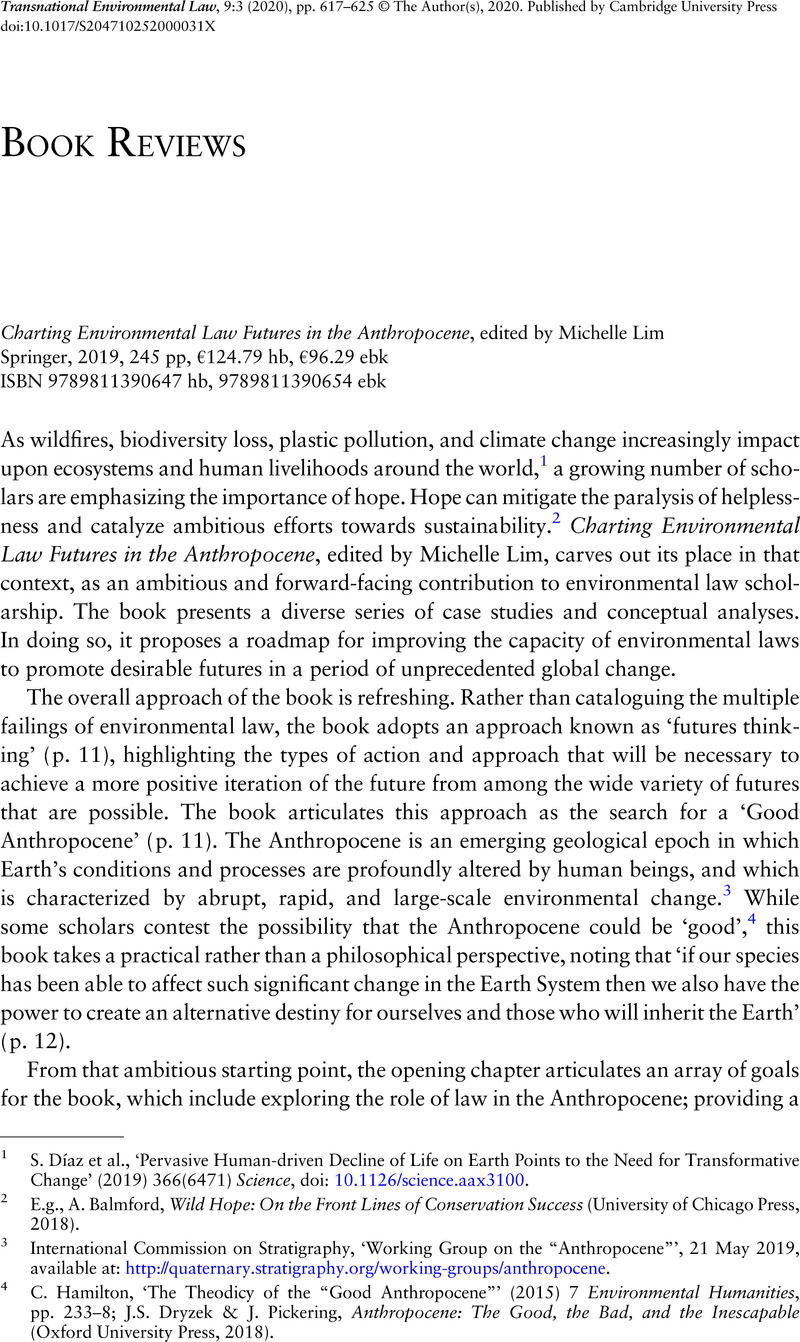No CrossRef data available.
Published online by Cambridge University Press: 17 November 2020

1 Díaz, S. et al. , ‘Pervasive Human-driven Decline of Life on Earth Points to the Need for Transformative Change’ (2019) 366(6471) ScienceCrossRefGoogle ScholarPubMed, doi: 10.1126/science.aax3100.
2 E.g., Balmford, A., Wild Hope: On the Front Lines of Conservation Success (University of Chicago Press, 2018)Google Scholar.
3 International Commission on Stratigraphy, ‘Working Group on the “Anthropocene”’, 21 May 2019, available at: http://quaternary.stratigraphy.org/working-groups/anthropocene.
4 Hamilton, C., ‘The Theodicy of the “Good Anthropocene”’ (2015) 7 Environmental Humanities, pp. 233–8CrossRefGoogle Scholar; Dryzek, J.S. & Pickering, J., Anthropocene: The Good, the Bad, and the Inescapable (Oxford University Press, 2018)Google Scholar.
5 E.g., Kotzé, L.J. & French, D., ‘The Anthropocentric Ontology of International Environmental Law and the Sustainable Development Goals: Towards an Ecocentric Rule of Law in the Anthropocene’ (2018) 7(1) Global Journal of Comparative Law, pp. 5–36CrossRefGoogle Scholar.
6 Regional and domestic laws are addressed in chapters on Latin America (Ch. 2); China (Ch. 3); Japan (Ch. 6); India (Chs 14 and 17); and South Africa (Ch. 18).
7 E.g., Balint, P.J. et al. , Wicked Environmental Problems: Managing Uncertainty and Conflict (Island Press, 2011)CrossRefGoogle Scholar, who define wicked problems as problems that are ‘characterized by a high degree of scientific uncertainty and a profound lack of agreement on values … [and] the absence of a perfect solution’: ibid., pp. ix, x.
8 Benson, M.H. & Craig, R. Kundis, ‘The End of Sustainability’ (2014) 27(7) Society & Natural Resources, pp. 777–82CrossRefGoogle Scholar.